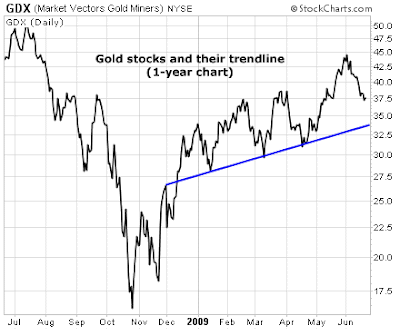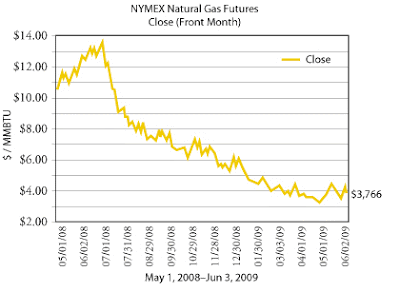Brazil's National Commitment to Energy -- Bankrolled by China
Brazil is making a national commitment to develop energy resources located far offshore in the South Atlantic. Indeed, no nation has ever advanced such an ambitious plan for long-term comprehensive offshore development. And it’s being bankrolled by China.
Much of Brazil’s South Atlantic development will require drilling wells in waters up to two miles deep, through four-five miles of rock beneath the seabed. The prize at the end will be oil deposits with reserves estimated in the tens of billions of barrels. With access to this offshore bounty, Brazil expects to take its place among the first ranks of energy-producing nations in the world.
Brazil’s state-controlled national oil company (NOC), Petroleo Brasileiro SA (Petrobras) plans to spend over $175 billion in the next five years just on offshore development. The immense investment involves buying and building dozens of new drill ships and seagoing platforms, along with many dozens more support and servicing vessels. Petrobras will lay thousands of miles of pipelines on the seafloor, connecting massive complexes of subsea equipment that will sit atop hundreds of oil wells.
To finance much of this development, Brazil has turned to China. With the active support of the Chinese government, many Chinese banks are lining up to extend loans to Brazil’s energy sector. Right now, there is an agreement for a Chinese consortium to lend Petrobras $10 billion. In exchange, Petrobras will eventually ship 200,000 barrels of oil per day to Chinese refineries. There are more such long-term finance supply deals in the works.
The Chinese government has established strategic guidelines for its national firms. That is, the Chinese government has set goals for Chinese firms to supply China’s long-term needs for energy and other natural resources. The Chinese are looking well ahead into the rest of this century, and even into the 22nd century. They want to ensure their future access to a diverse global supply chain, as well as win entrée into resource-rich regions of the world for Chinese industries and support firms.
Why are the Chinese receiving such a warm welcome in Brazil? According to Sergio Gabrielli, CEO of Petrobras, “The U.S. has a problem. There isn’t someone in the U.S. government that we can sit down with and have the kinds of discussions we’re having with the Chinese.”
In other words, there is a new geopolitics of oil at work. In the olden days, it would have been large international oil companies (IOCs) like Exxon Mobil, Shell and BP walking into a room to meet with the Brazilians. The IOCs were the only game in town. They controlled the financing and the technology for large developments.
But today, the biggest deals begin with a political understanding at the top, hammered out between the highest levels of the respective governments. This top-down political deal making cuts out the IOCs, except where they have technical expertise that can be hired on a contract basis.
In essence, we are witnessing the end of the post-World War II economic construct of the world’s financial system. That construct always had a Western bias. But the 2008 crash of the Western business and financial model has changed everything. It has left a barren worldwide financial landscape for large development projects. Most traditional Western financing is simply not available for large projects. And as French author Francois Rabelais (1494-1553) once noted, “Nature abhors a vacuum.”
Thus has the Western financial crisis handed well-capitalized, government-backed Chinese banks and industrial firms an unmatched competitive advantage. With the traditional credit markets dry, Chinese banks have transformed into key lenders for the resource developments that will fuel the next generation of humanity. Indeed, for now, the Chinese are the world’s ONLY lenders for large resource development projects. See Brazil, Exhibit 1.
China’s Rare Earths Monopoly — All But InsurmountableChina’s support for Brazilian energy development is not the only angle that the Chinese government is pursuing for its future gain. China’s large reserves of foreign exchange, as well as its national strategic focus, has enabled incomparable — even insurmountable — progress for the Middle Kingdom to corner the world supply of substances called rare earths. Here’s the production chart for the past half century. Obviously, something is going on here.

Now that we’ve seen this chart, the questions arise: What are rare earths? And why are they important?
Rare earths are the 15 elements within the lanthanide series of the periodic table, plus the elements yttrium and scandium. The best known are lanthanum, cerium, neodymium, praseodymium, gadolinium, europium and samarium.
Here’s why rare earths are important. They’re used in a wide range of industrial and electronic applications. For many years, large amounts of lanthanum and cerium have been used in petroleum refining, with the result of increasing yields from each barrel of oil by about 10% while extending the life of other expensive catalysts like platinum. And rare earths find their way into myriad other applications, from aerospace super-alloys to rechargeable cell phone batteries.
More recently, large volumes of rare earths (especially neodymium) have gone into magnets. In fact, rare earths are a key component in strong, permanent magnets. It’s not those cute little refrigerator magnets; your computer contains a number of tiny magnets in its hard drive. If there are no permanent magnets, there are no computers. Or DVDs or DVRs or iPods, etc. Say farewell to your wired way of life.
And then there are the giant 1-ton magnets used in large windmill assemblies. Each windmill magnet is about the size of a car engine and uses 560 pounds of neodymium. The implication is that if the U.S. wants to erect windmills to generate electricity, the nation is making a long-term commitment to buy and use unprecedented amounts of neodymium. And there are NO substitutes. For just this one “clean energy” application, large amounts of rare earths — and the ores and mines to produce them — are essential.
There are many other clean-energy applications for rare earths as well, particularly in the now forming electric car industry. Neodymium magnets are key components in electric motors and regenerative braking systems used in hybrid vehicles. Without these magnets, no electric cars will ever roll off an assembly line, let alone whiz down an American highway.
Another significant demand for rare earths will come from large rechargeable batteries for electric cars. Nickel-metal hydride (NiMH) rechargeable batteries, for example, contain cerium and lanthanum in a form called “mischmetal.” And right now, NiMH batteries are the battery of choice for many hybrid vehicles. Overall, a typical hybrid electric vehicle can use about 50 pounds of rare earths — between the rechargeable battery pack, the permanent magnet motor and regenerative braking system. (Plus other tiny magnets for the sound system, power windows, power seats, windshield wipers, etc.)
So clearly, demand for rare earths is set to skyrocket. Just clean energy applications will drive unheralded demand for metals of which most investors — let alone consumers — have never heard.
It’s also important to keep in mind that almost none of the rare earths used in large power systems (like windmills) or electric vehicles (such as with NiMH batteries) are currently being recycled. The long lifetimes of the magnets and batteries, coupled with the lack of recycling technologies and dedicated facilities, means that any increase in supply can only come from new mining.
Another factor is that there appears to be an official Chinese policy to slow down export of rare earths. Chinese exports have decreased by 8% or so each of the past three years. Chinese suppliers have placed foreign customers on allocation, at reduced quantities from years past. The Chinese explain that they have closed mines for environmental reasons. Yet the Chinese also promise adequate supplies of rare earths if foreign users will move their industrial facilities into China.
According to Yoichi Sato, head of the Rare Earths Department of Japan’s Mitsui Industries, China is displaying its long-term strategy toward these critical elements. Mr. Sato believes that China is playing a complex game with the world’s rare earth consumers.
First, China is restricting rare earths exports, to provide its own high-tech industries with the chance to flourish and gain a competitive edge over rivals in Asia, Europe and the U.S. And second, it will force many foreign firms to move their high-tech factories and research centers to China to circumvent quotas. China, to be sure, has a small army of highly capable scientists and engineers who focus on rare earths applications — over 15,000 Ph.D.-level individuals, by one count.
Mitsui’s Mr. Sato believes that China will use its existing monopoly status in rare earths production to crush any competition that emerges. While about 42% of worldwide rare earths resources are outside China, there are NO non-Chinese sites with any significant processing or refining capacity. In the game of rare earths, China holds almost all of the cards.
Mr. Sato has stated, “Many people are looking at establishing alternative refineries and sources outside China, but the investment is not necessarily a sound one because of the threat of price revenge by China. If new projects emerge, as they have recently in Malaysia and Australia, China could just drop its prices and force rivals out of business.”
And as if on cue, in April 2009, Chinese firms used their financial muscle to buy large stakes in potential foreign rivals in Malaysia and Australia.
I hope that you now understand the importance of rare earths to the 21st-century economy of the West, particularly to the energy future of the U.S. I’m following this situation very closely. There ARE some potential investment opportunities in rare earths, but only in very small, thinly capitalized firms. I’ll share some of these investment ideas with you in future.
Goog Investing.
Byron King





